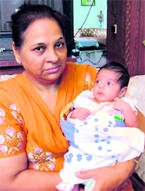Mr. Prabhakar
Quoting from your post 30 - 07 2010 @ 22.07 hrs. ".........About female feticide. Even though it is illegal, not even a single prosecution has happened since passage of the Act."
Now-a-days you will not see a single week without an article about female feticide in Indian dailies and magazines. Center for Social Research (CSR) in its annual report says ‘Family tradition and dowry system emerged as the two major causes of female feticides’. This quote is one of the favorites of Indian feminazis as well. Here is a common man’s arm-chair research and analysis about this issue based on the available historical census data of India in comparison with two other countries China and USA.
Graph given below shows the s*x ratio of India from 1901 till 2001 as in CSR annual report which startled me and triggered this analysis.

Indeed it is a steady decline in the number of women over the period of hundred years. Obviously it gave birth to umpteen questions in my mind. The one that dominates every other question was
“What is the ideal s*x ratio?”
But I couldn’t find any realistic answer for that. Anyone can say 1:1, but is that some where close to reality? Will it be sane to say at a given date and time the number of girls and boys on a particular geographical region will be equal if there is no s*x selective abortion? Do we have any mechanism to find the exact figure at the given point in time? Absolutely NOT. I know the whole extended family of Pythagoras will stand up and say, ‘hey I have a formula to figure that out’.
Usually s*x ratio is determined either based on the actual population or by cohort method. To me either of these methods doesn’t seem fit to come to a conclusion because the so called missing females may be due to take birth the next day of census.
Still I tried to understand why the graph above looks so pathetic. To get a deeper understanding lets take a wider look at the whole scenario.

This is the data for the same period of time showing the population as a whole along with total number of men and women according to each census. I assume you would have noticed the remarkable difference in number of men and women started in early or mid 60s. Until then the graph goes neck to neck though women were slightly less in number.
My point is, if we take the conclusion of CSR in its face value, i.e., family tradition and dowry system are the major cause of female feticides, then why is the number of females less during the first half of the century when we didn’t have any available s*x determination technologies? I know CSR and feminazis are going to play the different card, ‘female infanticide’ and ‘dowry death’.
Before we try to digest that theory lets compare our population trend with that of United States of America. The reason why I chose USA is because it is pretty diverse with multi-ethnic as well as multi-racial communities; hence there are no social structures which may influence everyone.

Does that make your eyes wide open to see the same trend in early or mid sixties on the graph? But here the number of males came down after 1960! Except during the American civil war (1861–1865), which resulted in massive death of men, the number women were less than the number of men; not to mention the fact that men outnumbered women consistently through out 19th century!

Apparently, the s*x ratio was similar or even lower than that of India mostly in 19th century and even during early decades of 20th century.
Was there a remote chance of dowry or family tradition in order to make this happen?
Why do we need Herculean formulas made out of thin air to prove something that doesn’t exist? Well, I’m leaving those questions to the readers.
Now the most conspicuous question is
what was the reason for the significant imbalance in the s*x ratio from 1960 onwards world wide?
One who believes it is because of the selective killing of female fetus in India should also be willing to believe there was selective killing of male fetus in USA.
Obliviously or intentionally, CSR and all other international agencies that fund for the female feticide campaign, brushed the fact “Family Planning” under the carpet. It was by the end of fifties, countries around the globe started promoting birth control techniques like condoms and pills, which evidently have made severe damage to the natural balance in s*x ratio. Remember, there were no prenatal s*x determination techniques during the sixties; even in the present century these sophisticated technologies are affordable only to the rich. Further more the earlier methodologies used for prenatal s*x determination require the fetus to be at least 16 to 20 weeks old in order to get accurate results! At that stage abortion is almost impossible or at the high risk of mother’s life. Such incidents of mass death of women due to abortions were never reported either in India or China.
Historical census data of China is not internationally accepted due to misreporting of birth; more over they started taking census only by 1953. But considering the huge population, the one child policy (publicly announced in 1979), and its strict enforcement should be a valid reason for the imbalance in their s*x ratio if such an imbalance ever existed. Still history asserts that 94 females for 100 men (as per 2008 data), is not an alarming ratio. Simply blaming on son preference, patrilenial social structure and dowry system seems to be very cheap and low grade remarks to achieve devious goals.
Source: https://prassoon.instablogs.com/entry/female-feticide-a-mysterious-propaganda/#ixzz0vNtzk72L



















